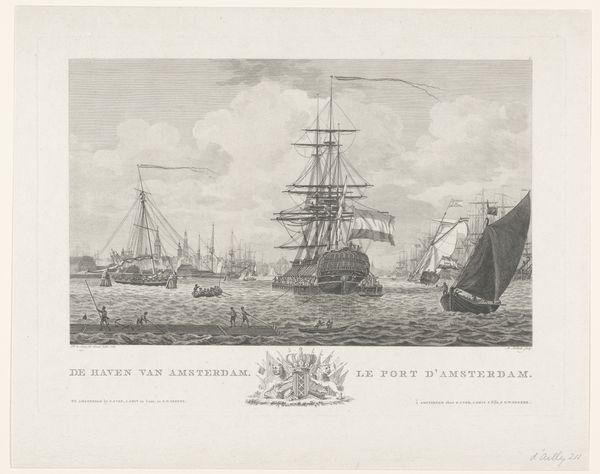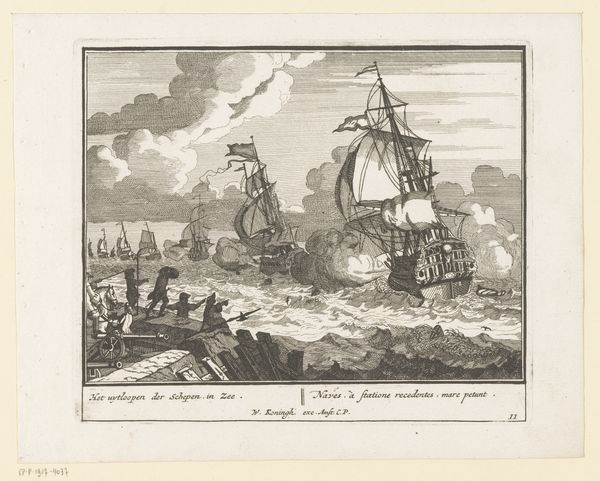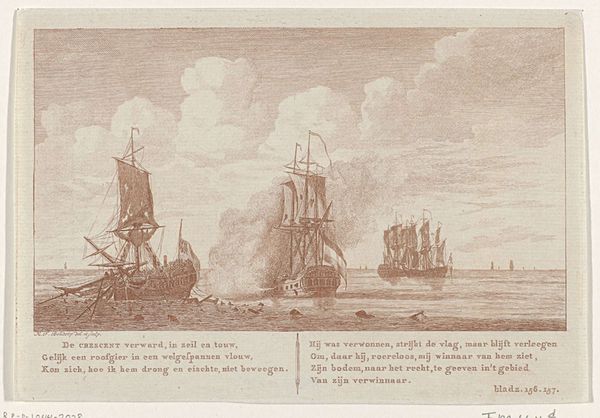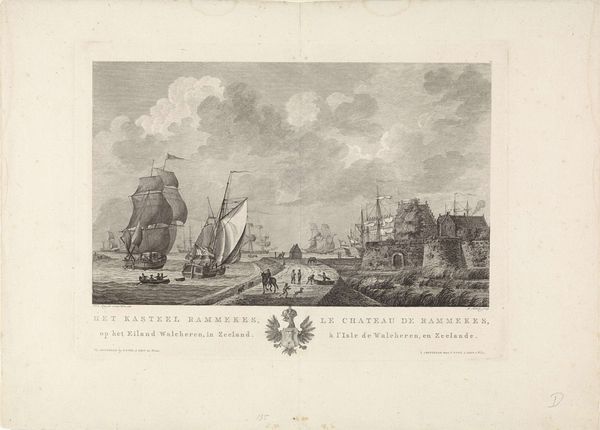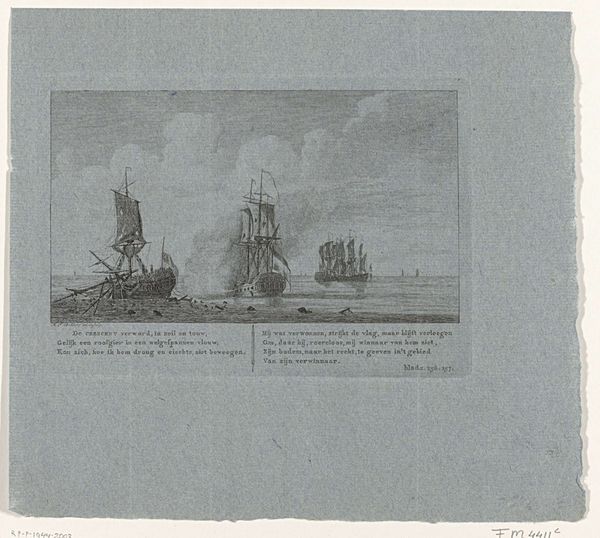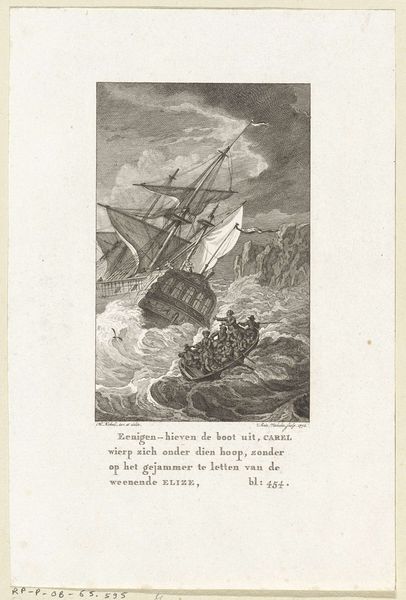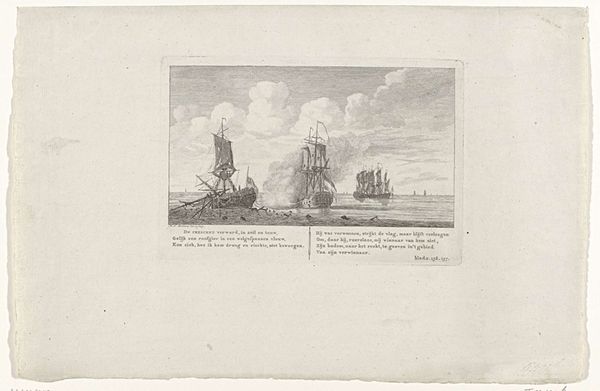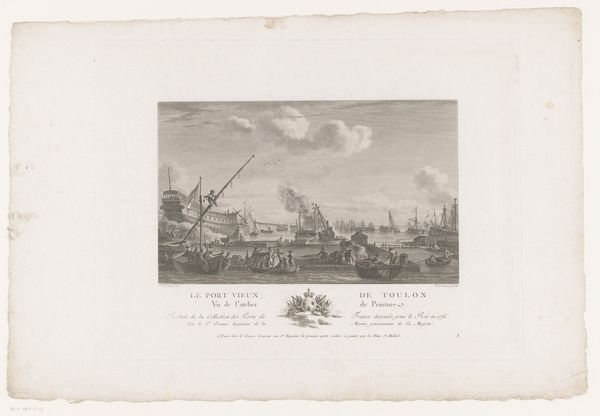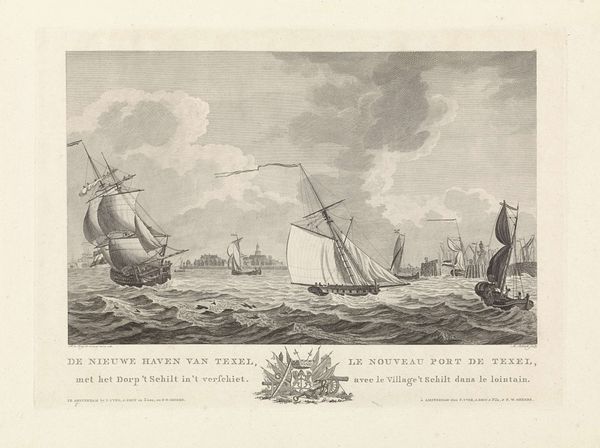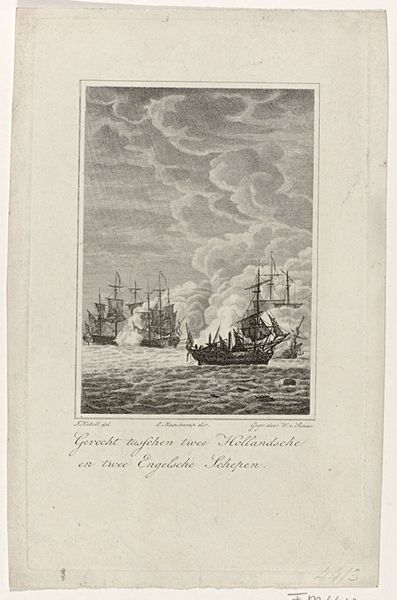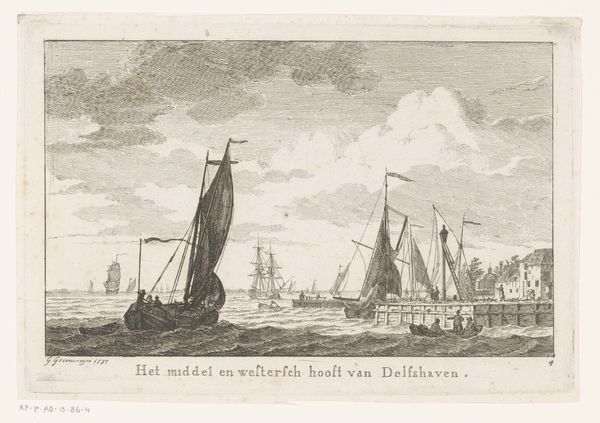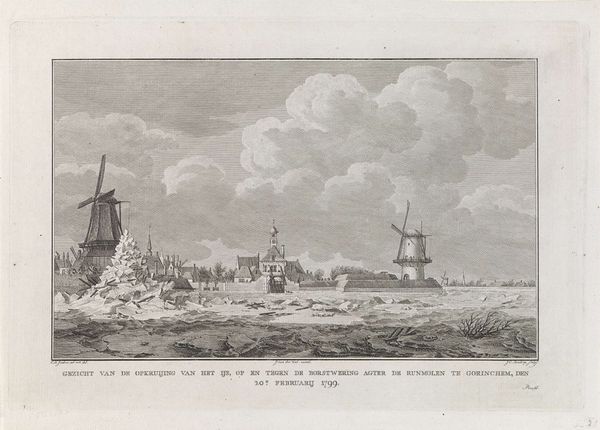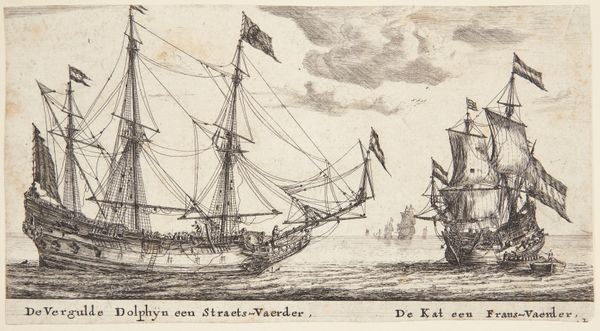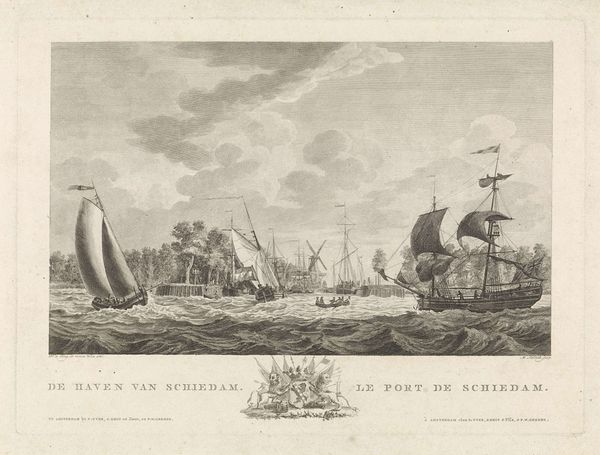
#
pencil drawn
#
aged paper
#
light pencil work
#
parchment
#
old engraving style
#
personal sketchbook
#
sketchbook drawing
#
pencil work
#
word imagery
#
historical font
Dimensions: height 228 mm, width 142 mm
Copyright: Rijks Museum: Open Domain
Curator: Looking at this aged paper, one can find the pencil drawing "Entering van de Spaanse Armada," created in 1825 by Johannes Christiaan Bendorp. It’s held here at the Rijksmuseum. Editor: It has a subdued, almost somber mood. The use of light pencil work on what looks like parchment paper creates a real sense of historical distance. Curator: Indeed. It's essentially a book illustration. The typography above the naval scene tells us that the picture represents the "equipment and downfall of the invincible fleet of Phillips II, in 1588." Jacobus Scheltema is listed as the author of the volume. It presents the moment of their inglorious return. Editor: Ah, so it commemorates not a victory, but defeat. That helps explain the muted tones. The ships are dwarfed by the sky, creating a feeling of insignificance. I'm particularly struck by the figures in the rowboat. Do they symbolize something specific? Curator: Likely figures related to the printing and publishing, perhaps even Scheltema himself. But the artist uses the symbol of the Armada's demise as a reflection on the hubris of empires, relevant even to his contemporary audiences grappling with shifting global powers after the Napoleonic era. Consider that period, the social anxieties, the rise of national narratives... it’s all there in the decision to reproduce this event. Editor: So the image serves as both historical record and political commentary. The visual echoes of earlier defeats likely held profound significance. It underscores the fragility of power and the cyclical nature of history. Curator: Precisely! That Bendorp revisited this event centuries later speaks volumes about its continuing relevance. A potent commentary that speaks even through its modest materials. Editor: It gives me a more thoughtful understanding of Dutch self-fashioning. It's fascinating how the choice of imagery impacts one's understanding of an era.
Comments
No comments
Be the first to comment and join the conversation on the ultimate creative platform.
